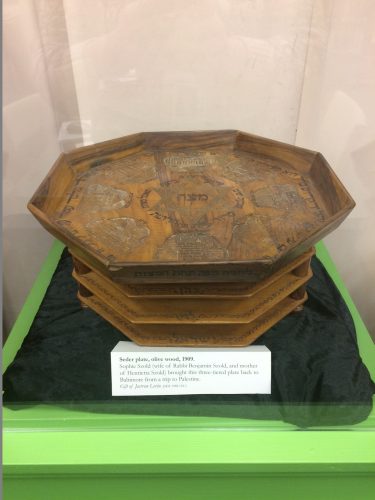What’s in (and on) a Seder Plate?

JMM Staff Share Esther’s Place Favorites
A blog post by JMM Office Manager and Shop Assistant Jessica Konigsberg. For more posts from Jessica, click HERE.
During Passover, the Seder plate is, for many, the symbolic heart of both the meal and the ritual, carrying five or six items that help tell key parts of the Passover story: karpas (often parsley), charoset (sweet fruit), maror (often horseradish), zeroa (roast lamb shankbone), and beitzah (egg). Some Seder plates also contain a second bitter herb known as chazeret. And some plates may also hold an orange or other contemporary addition that conveys a social justice message and recognizes the contributions of specific members of the community, including gay and lesbian and women members of the Jewish community.

The Seder plate is often a piece of great beauty, pride, and personal meaning within the home. And in honor of this, a small group of JMM staff picked out their favorite Seder plates on sale at the JMM Gift Shop, Esther’s Place, and shared a few thoughts on why they love their chosen plate and/or how they would incorporate the plate into their own Passover celebrations. Here are their selections and stories.
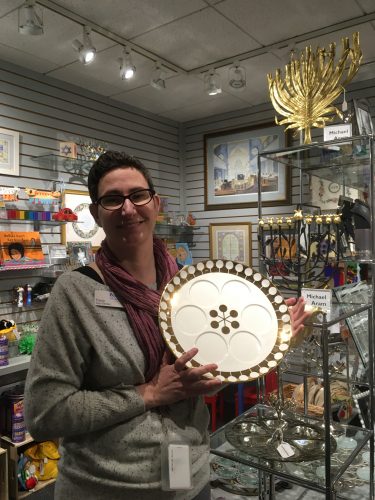
The Futura Seder Plate by Jonathan Adler is not only my favorite one in the Gift Shop, it is also the actual Seder plate used by my family. I first saw the plate in an internet ad, which took me to the website of the Jewish Museum Shop (the New York museum). I fell in love instantly with the plate’s mid-century aesthetic, particularly the central atomic-looking figure—and promptly bought the plate first for myself. Then I figured out how to buy it for Esther’s Place. In fact, this plate is the reason that Esther’s Place carries Jonathan Adler products (which include other beautiful and unusual Judaica and tabletop items). The plate goes with my family’s Sputnik-style dining room light fixture and mid-century-style table, perfectly complementing our dining room—both in terms of style and ritual.
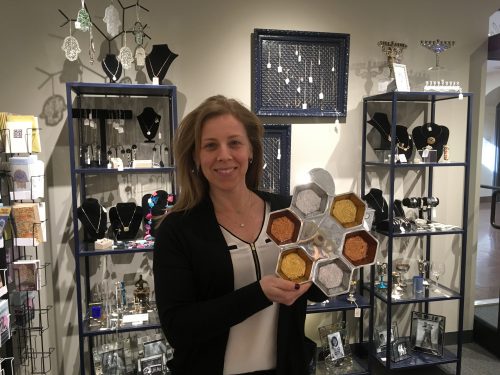
I love metallic and shine, so when my eye caught the Seder Plate on Pedestal by Israel Giftware Designs I knew I had found my favorite. There’s something harmonious about the mix of silver, gold, and bronze. These metals are typically isolated from one another, and I loved the risk of the designer to put them adjacent to one another and result in something so beautiful. I think the design is reflective of my own Seder table, where there always seems to be an added guest, someone new, a friend stopping by, and an extra chair being pulled up at last minute. Regardless of how fragmented all the pieces may be, they make sense together—similar to this Seder plate.
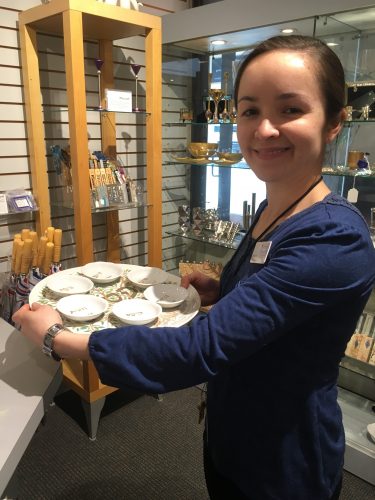
My favorite Seder plate is our Porcelain Tree of Life Seder Plate because it is most reminiscent of the Seder plates that my husband and I have used during each Passover we’ve shared together. To clarify, until recently, my husband and I had never owned a real Seder plate. Each year, my creative, resourceful husband makes us a disposable Seder plate using a white paper plate and colorful print-outs from the internet—one for each of the six items to be displayed on the plate. The Tree of Life Seder Plate reminds me of the bright, friendly illustrations that have come to characterize our humble Seder plates. I also love the Tree of Life imagery and symbolism generally; in particular, the idea of trees representing humanity and human aspiration resonates with me and seems to fit well with the meaning of Passover.
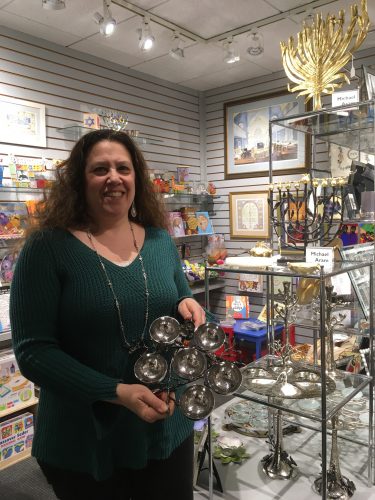
This Seder plate appeals to me because the spring motif was executed through beautiful craftsmanship. I love the combination of metalsmithing styles and patinas.
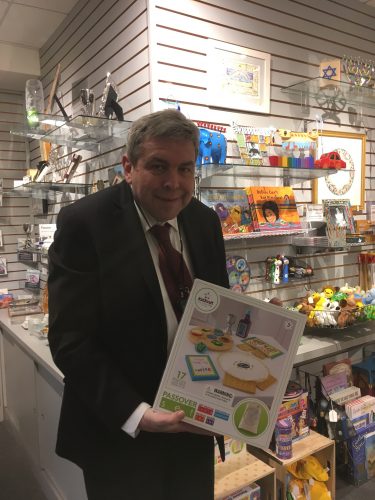
I chose the KidKraft Passover Set. I particularly liked the two-piece afikomen. At my Seder, I’ll be saying “Next year in Jerusalem” and then out of hearing range of my son and daughter, “…maybe, the year after that a grandchild to share this afikomen with?”
The Passover holiday, which remembers the story of the Jewish people’s salvation from slavery in Egypt, is one of liberation, and the Seder is often, fittingly, a reflection of personal expression. We hope you’ll stop by Esther’s Place to experience some of this beauty and self-expression through our many beautiful and distinctive Seder plates and other table accompaniments, including Elijah’s Cups and Miriam’s Cups (the latter is a Seder addition honoring women), salt water dishes, horseradish dishes and more. How does your Passover table tell the story of the holiday and of your household and loved ones? We would love to hear.
And as you prepare for the upcoming holiday, don’t forget to check out our online collection database to enjoy the many special Seder plates in our Museum collection. Click here to explore the collection. If you stop in to the JMM library in the next couple of weeks, you can get a closer look at one of those Seder plates!
